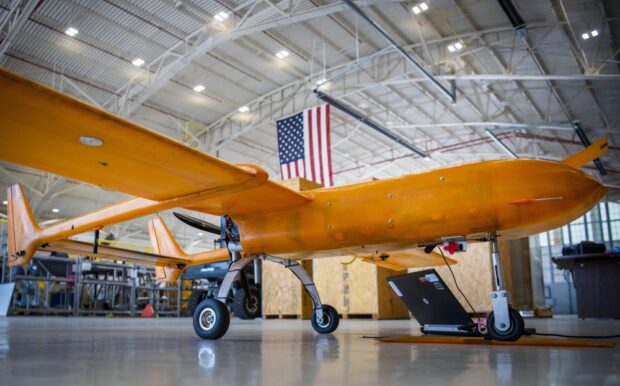The Osprey MK III, an unmanned aerial system, made its first autonomous test flight July 20 as part of the new Autonomy, Data, and AI Experimentation Proving Ground effort at Eglin Air Force Base, Florida.
This event was the start and demonstration of a testbed that allows autonomy and AI software developers to quickly flight test their algorithms with ADAx on Eglin’s range. That mission falls under Autonomy Prime Environment for Experimentation or APEX, a subset of ADAx.
“Our goal with APEX is proving a capability to safely and quickly test novel autonomy and AI on small UAS that is safe enough to be in close proximity to other aircraft,”
said Maj. Riley Livermore, ADAx experimentation lead.
For this test, MKIII’s human operators launched the aircraft and then switched control to the onboard autonomy. The aircraft flew around a designated airspace located at Duke Field, north of Eglin.
APEX’s autonomy watchdog feature was the subject of these initial tests. The onboard autonomy was purposely programmed to fly the MK III outside the user-defined airspace boundary constraints. Each time the aircraft was about to violate the airspace boundary the watchdog feature would disengage the autonomy and send the aircraft to a safe remediation point. This feature is part of the unit’s Test of Autonomy in Complex Environments system or TACE.
TACE is the software component of APEX that sits between the onboard autonomy and the aircraft itself. This location allows TACE to prevent unwanted commands from the autonomy to be sent to the aircraft’s autopilot. TACE can also manipulate the world view of the autonomy to create more realistic scenarios for testing autonomy without jeopardizing the aircraft. These two factors combined will make TACE an invaluable tool for autonomy and AI developers to test their new programs quickly and safely.
The July 20 flight was the first of five over three days and 2.7 hours. A host of Air Force Materiel Command test units had a hand in proving the new test bed capability and functionality.
AFWERX sponsored the testing. Air Force Research Lab’s Armament Directorate prepared the aircraft. The 416th Flight Test Squadron’s operators launched and recovered the MKIII and 413th Flight Test Squadron personnel executed the testing. The 96th Operations Support Squadron also had a role and were instrumental in paving the way for APEX testing occurring simultaneously with manned airfield operations, according to Livermore.
ADAx is a relatively new venture here. Its mission is to operationalize autonomy and artificial intelligence through experimentation and testing. The ADAx is a Chief Digital and Artificial Intelligence Office and AFWERX venture, with the 96th TW as the lead and Eglin units supporting.
“We want to prepare the warfighter for the digital future that’s upon us,” said Col. Tucker Hamilton, 96th Operations Group commander and Air Force AI test and operations chief. “This event is about bringing the Eglin enterprise together and moving with urgency to incorporate these concepts in how we test.”
Other ADAx efforts in the works include the Viper Experimentation and Next-gen Ops Models (VENOM) under which Eglin F-16s will be modified into airborne flying test beds to evaluate increasingly autonomous strike package capabilities.
Additionally, Project Fast Open X-Platform (FOX) strives to establish an open software enclave to install apps directly onto aircraft without altering proprietary source code. These apps would enable numerous mission-enhancing capabilities such as real time data analysis, threat replication for training, manned-unmanned teaming, and machine learning.
Source: Air Force Life Cycle Management Center



